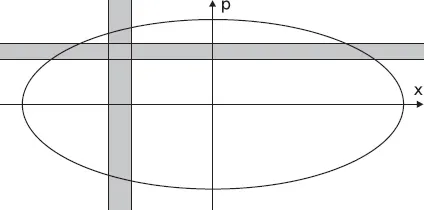
The World According to Quantum Mechanics
Why the Laws of Physics Make Perfect Sense After All
Ulrich Mohrhoff, Manu Jaiswal
- 500 pages
- English
- ePUB (adapté aux mobiles)
- Disponible sur iOS et Android
The World According to Quantum Mechanics
Why the Laws of Physics Make Perfect Sense After All
Ulrich Mohrhoff, Manu Jaiswal
À propos de ce livre
Apart from providing a lucid introduction to the mathematical formalism and conceptual foundations of quantum mechanics, we explain why the laws of physics have the form that they do. In addition, we present a new and unique look at the quantum world, steering clear of two common errors: the error of the ψ-ontologists, who reify a calculational tool; and the error of the anti-realists, for whom physical theories are simply devices for expressing regularities among observations.
The new edition of this acclaimed text adds around 200 pages on a variety of topics, such as how the founders sought to make sense of quantum mechanics, Kant's theory of science, QBism, Everettian quantum mechanics, de Broglie–Bohm theory, environmental decoherence, contextuality, nonlocality, and the paradox of subjectivity — the curious fact that the world seems to exist twice, once for us, in our minds, and once by itself, independently of us.
Contents:
- Overview:
- Probability: Basic Concepts and Theorems
- A Brief History of the 'Old' Theory
- The 'New' Theory
- The Feynman Route to Schrödinger (Stage 1)
- Special Relativity in a Nutshell
- The Feynman Route to Schrödinger (Stage 2)
- A Closer Look:
- Quantum Mechanics: A Probability Calculus
- The Classical Forces: Effects
- The Classical Forces: Causes
- Quantum Mechanics Resumed
- Spin 1/2
- Angular Momentum and the Hydrogen Atom
- Composite Systems
- Contextuality, Locality, Realism, and All That
- Quantum Statistics
- Relativistic Particles
- Making Sense:
- How the Founders Sought to Make Sense of Quantum Mechanics
- Quantum Mechanics and Consciousness
- QBism
- ψ-Ontology
- Environment-Induced Decoherence
- Space, Time, and the Macroworld
- Questions of Substance
- Manifestation
- Why the Laws of Physics are Just So
- Consciousness and the Physical World
- Quanta and Vedanta
- Appendix A: Some Mathematical Tools
- Appendix B: Solutions to Selected Problems
Readership: Students, lecturers in university undergraduate physics courses related to quantum mechanics.
Key Features:
- Presents the formalism of quantum mechanics in a clear and compelling manner
- Useful to both students (undergraduate as well as graduate) and teachers (including higher secondary)
- Serves as the missing link between the popular literature on quantum mechanics and the academic literature
Foire aux questions
Informations
PART 2
A Closer Look
Chapter 7
Quantum mechanics: A probability calculus
7.1The classical probability calculus




